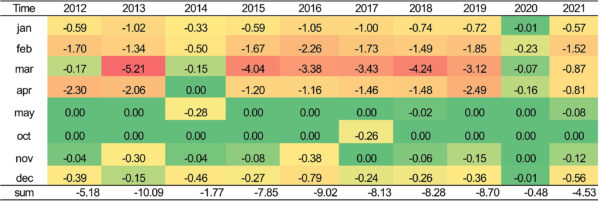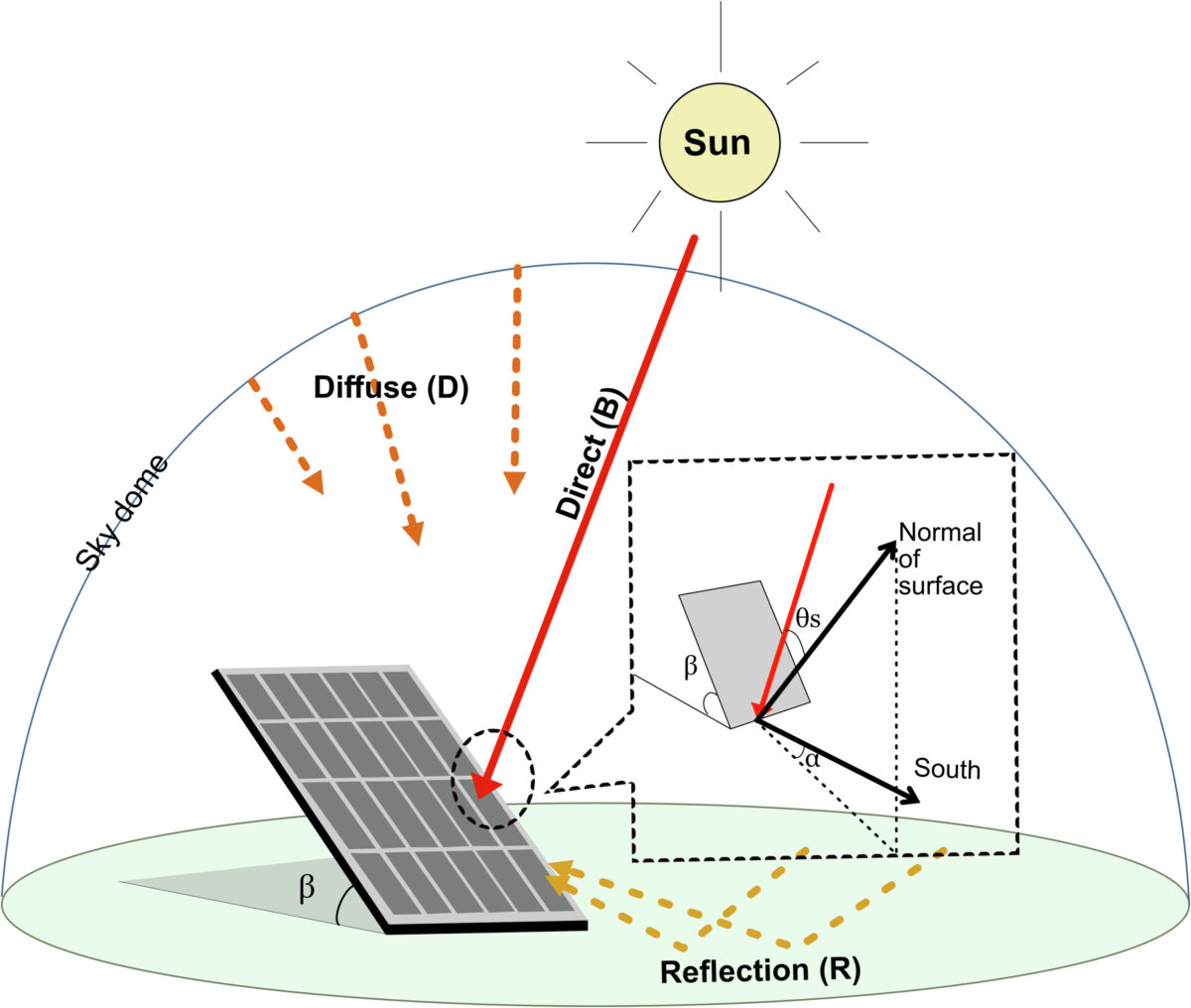Scientists from Sweden have developed a novel model for optimal PV installation angles in cold high-latitude regions. The model uses weather big data and also accounts for the effect of transmittance change caused by snow, which is calculated by taking into account snow depth, as well as its melting rate.
“Snow-induced loss might be a small proportion for low/mid latitude,” the researchers said. “However, for the high-latitude areas where the winter seasons are generally lengthy, the snow effects play an important role so that exclusion of snow effects would significantly influence the reliability of the results.”
The novel method couples an optimal PV installation angle model to maximize PV power generation with a simplified snow-PV yield model (SPYM). The PV angle model is executed with angles ranging from 0 degrees to 90 degrees with 0.1-degree intervals, finding the optimal position based on total global solar irradiation on the PV system, which is given by the sum of direct, diffuse, and reflection irradiation.
The adjusted irradiation is yielded from the SPYM model, which is based on snow depth, air temperature, and irradiation. While the temperature can predict whether the snow on the panel is melting or covering the module, the snow depth determines its transmittance.
“The calculation of this snow loss factor refers to the transmittance model from Perovich,” the academics said. “The transmittance drops sharply from 1 to 0.1 when snow depth increases from 0 to 2 cm. Then, the decrease becomes smoother, and the value reaches 0.01 when the snow depth increases to 12 cm. When the snow depth is thicker than 12 cm, the value is assumed to be 0.”

Image: Applied Energy, KTH Royal Institute of Technology, CC BY 4.0 DEED
Following the development of the model, the scientists used Solcast historical meteorological data for 2012-2021 for the Swedish city of Hammarby Sjöstad as input. Optimal calculations were made for one year, five years, and ten years. In their case study, they assumed PV modules with 19.2% efficiency and an output of 430 MW.
Popular content
Then, they compared and used their novel model for three scenarios. The first case was a base case with no snow conditions, considering only historical irradiation and temperature data. In the second scenario, snow effects were calculated with the assumption that it melts after 12 hours. The last scenario assumed removal agents, which shortened the snow removal time to one hour. All the results were compared to the commercial insulation angle of 15 degrees and the geometric angle for Sweden, 40.7 degrees.
“The PV system with the annual optimal angle outperforms the one with a commercial angle, resulting in an approximate 4.8% increase in power generation,” the research group stated. “The optimal PV installation angle decreases when considering snow conditions, with the difference dependent on local weather conditions each year, reaching up to 7.8 degrees.”
In addition, the scientific group found that snow conditions lowered power generation conditions by 14.7%. They also found that applying removal agents can improve PV performance by 0.1%–2.3%.
Their findings were presented in “A new optimal PV installation angle model in high-latitude cold regions based on historical weather big data,” published on Applied Energy. The research was conducted by academics from Sweden’s KTH Royal Institute of Technology and the Swedish Meteorological and Hydrological Institute.
This content is protected by copyright and may not be reused. If you want to cooperate with us and would like to reuse some of our content, please contact: editors@pv-magazine.com.


By submitting this form you agree to pv magazine using your data for the purposes of publishing your comment.
Your personal data will only be disclosed or otherwise transmitted to third parties for the purposes of spam filtering or if this is necessary for technical maintenance of the website. Any other transfer to third parties will not take place unless this is justified on the basis of applicable data protection regulations or if pv magazine is legally obliged to do so.
You may revoke this consent at any time with effect for the future, in which case your personal data will be deleted immediately. Otherwise, your data will be deleted if pv magazine has processed your request or the purpose of data storage is fulfilled.
Further information on data privacy can be found in our Data Protection Policy.